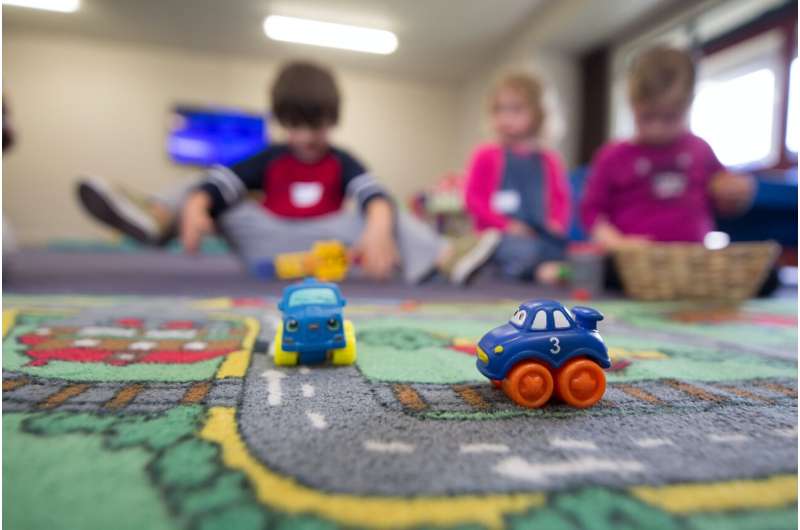Researchers have made a fascinating discovery about the social phases in human movement by observing preschool children in classrooms and playgrounds. Using cutting-edge RFID technology, they were able to track the children’s movements, revealing two distinct phases: a ‘gas-like’ phase of free, independent movement and a ‘liquid-vapor coexistence’ phase where small groups dynamically form and disperse. This research provides a new perspective on human interactions in low-speed social settings and could enhance strategies in education and crowd management, while also opening new avenues for research in social physics and active matter systems.

Revealing the Fluid Dynamics of Human Social Interactions
A new way to look at social dynamics in human movement — University of Miami physicists and psychologists collaborate on study
Using ultra-wideband radio frequency identification (UWB-RFID) technology, the team tracked preschool children in classroom and playground environments down to their exact location. This novel technique unveiled two mechanisms of human social behavior: a ‘gas-like’ phase with random, independent motion and a ‘liquid-vapor coexistence’ phase where small groups emerge dynamically.
The identification of these social phases provides a new lens through which to view human behavior in slow-speed social situations, potentially improving education and crowd management strategies. It also can advance the use of statistical physics ideas to study complex social phenomena in realms like those studied within active matter systems and the even more recently emerging areas of social physics.
A Matter of Interdisciplinary Unity: Path-Breaking Discovery Made Possible through Group Effort
The interdisciplinary study was conducted collaboratively by scientists from the Department of Physics and the Department of Psychology at the University of Miami, with contributions from both faculty and students, as well as external collaborators.
The research was co-led in part by Yi Zhang and Debasish Sarker, both fromthe Department of Physics, working under the direction of their advisor Professor Chaoming Song, a leading researcher in statistical physics and complex systems. Samantha Mitsven, a graduate student in the Psychology program helped with data collection and Professors Daniel Messinger and Lynn Perry contributed valuable knowledge in behavioral dynamics and social behavior of humans.
This cross-disciplinary collaboration enabled the team to draw on methods from physics and psychology in new and innovative ways. When incorporating these two complimentary views, the researchers revealed social phases in human movement that had never been observed before and presented both new directions for future research as well as practical applications.
Let The Dominoes Fall — Education, Crowd Management, and Beyond
The critical ‘gas-like’ and ‘liquid-vapor coexistence’ phases in human movement not only transforms the understanding of human motion in academics but also transcends to sporting solutions which evolve as a consequence of these findings.
These results have implications for educational practices in the areas of instruction and classroom management. Knowledge of childrens natural ways of doing relationships enables educators to develop environments that support learning, collaborative interactions, and social development.
Crowd management strategies could also benefit from the insights accrued through this research, while being applied to public events and transport nodes. Event organizers and urban planners can identify these hidden patterns in human movement as well as social interaction to pave the path for better crowd controlling to enhance security measures and streamline its traffic efficiency.
In addition to these useful applications, the work presents a new direction for studies of social physics and active matter systems. Using the tools of statistical physics to human social behavior will allow researchers to discover general principles and therefore achieve a deeper appreciation of complex dynamics in our interactions and community.
